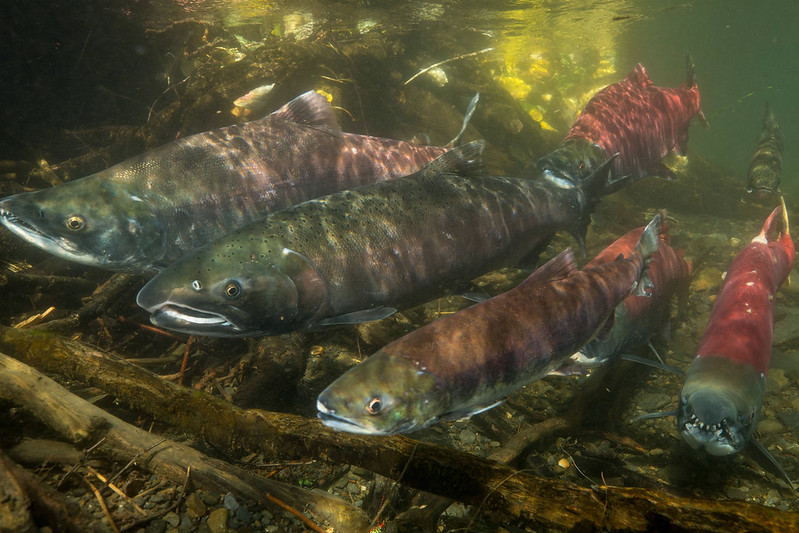Assessing the value of “forest fish” in Alaska’s national forests

Containing some of the world’s largest remaining temperate rainforests, Alaska’s national forests are valued for the ecosystem services they provide, forest products, and the recreational and cultural value they offer. But the streams of the Tongass National Forest in southeast Alaska and Chugach National Forest in southcentral Alaska hold a living, migrating resource that is harder to put a number on. ACRC research technician Emily Whitney and affiliates Ryan Bellmore and Di Johnson at the USDA Forest Service Pacific Northwest (PNW) Research Station and Stormy Haught with the Forest Service in Cordova are working to quantify the number of “forest fish” originating from Alaska’s National Forestlands in the last decade.
To distill the value of a keystone species like salmon down to a number requires the minds of local resource managers, economists, subsistence harvesters, and scientists. This project builds on the work of a 2019 study led by Di Johnson and Ryan Bellmore at the PNW Research Station that put a dollar value on the contribution of National Forest salmon to Alaska’s commercial fish industry. The study found that the Tongass and Chugach National Forests produced an average of 48 million of the Pacific salmon that were commercially caught annually from 2007 to 2016, equalling nearly 90 million dollars in commercial value.
Commercial value alone fails to grasp the vital place in the ecosystem that fish represent in the far north. In Whitney’s current work with partners, she is quantifying the value of forest fish to subsistence, personal use, and sport fisheries in the state. This massive undertaking involves compiling data from state and federal fisheries, sport fishing reporting, and subsistence use data.
By looking at mapped spawning areas, the proportion of streams that are in or outside the national forest bounds, and eliminating fish from other origins such as hatcheries, Whitney will be able to place a number on the quantity of fish caught in subsistence, personal use, and sport fisheries that originate in the Tongass or Chugach.
“One of the strengths of the project lies in the big picture approach. We might underestimate fish in one part of the system and overestimate in another, but when you put it together at a regional level it gives us a base to look at the value of these fish,” said Whitney.
In contrast to the earlier work valuing the contribution to commercial fisheries from national forest lands, valuing the revenue contribution to other fisheries is less straightforward than looking at the dockside value. “When we are looking at sport, personal use, and subsistence fisheries, it’s a little bit different. You can assign an economic value to them, but there are also recreational, subsistence, and cultural values. Some of those pieces are what we are trying to get at with this data,” said Whitney.
For Forest Service managers, the results of this work can be used for allocating resources to priority projects, revising management approaches to improve and maintain access to Forest Services resources, and to support the communities of subsistence, recreational, and personal use fishing.
“The importance of salmon is not only financial. Fish are a big part of Alaska and the way of life here,” said Whitney.